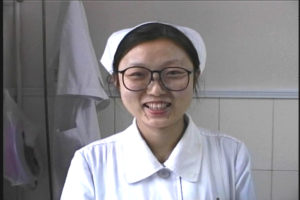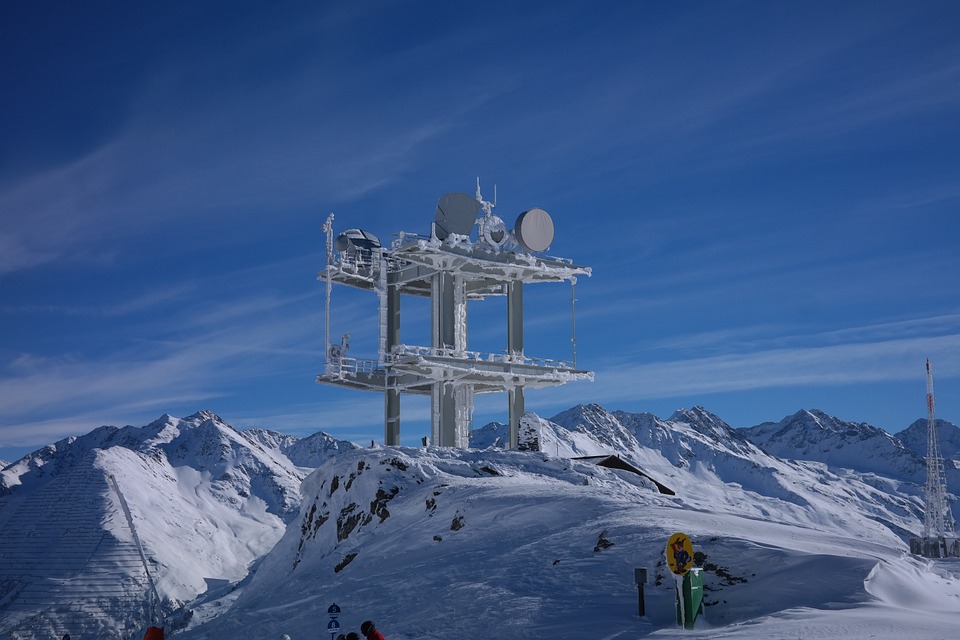Impossible!: Eight Chinese Artists Engage Absurdity (Catalog Essay)

Co-authored with Meg Shiffler, Director of the San Francisco Arts Commission Gallery
The artists in imPossible! first came together through an informal dialogue about the affinities in their work. In diverse ways, they recognized, their art registered a sense of absurdity in response to the rapid social and economic transformations underway in China. When Michael Zheng brought this project to us and proposed that we work together to mount an exhibition, he explained the effects of these changes on daily life, by remarking “The extreme polarity created by the early successes of capitalist experiments; the inundation with the media; the non-stop, all encompassing noise created by traffic and construction – they can be overwhelming, at times, threatening even to drive one over the edge.”
Among the works in the show, Zhu Jia’s Never Take Off (2002) provides one of the most explicit responses to this accelerated modernization. In the video, a jumbo-jet hurls down a runway, filling the viewer with anticipation of its ascent. Despite its speed and the roar of its engines, however, the plane never lifts off, leaving the viewer with a heightened awareness of his or her expectations. The piece draws upon the sublimity of modern air travel and the all-but-unbelievable fact that such 200-ton steel monsters fly. And isn’t this how contemporary China, in its sublimity, sometimes appears, as an awesome behemoth hurtling toward the future, poised to take off? But will it? And, if so, how? What should be expected? Does it make sense still to think of modernization as progress? Or is all the speed and power of the modern world ultimately aimless, an exercise in futility?
In Michael Zheng’s own 14 Minutes A Revolution (2002), these issues of anticipation, disappointment, and historical direction are framed retrospectively in terms of the fate of the Communist Revolution in China. In the video, Zheng sits cross-legged on the ground with two cassette players in front of him. He presses record on one and sings the “Internationale.” For the remainder of the piece, he then re-records the initial recording, bouncing it back and forth between the two machines. Each time the recording quality is further degraded, until finally the anthem dissolves into white noise and feedback. The distorted tape whistles and howls, like wind though a tunnel, or a ghost. Through the feedback, the anthem strains to be heard, serving as a witness to the past and to the unrealized hopes that motivated previous generations.
Despite such specific connections to the changes currently taking place in China, however, the absurdity addressed in these works resonates broadly, as if the radical contingency of life in contemporary China has rendered these artists particularly sensitive to the uncertainty of the modern world and the tenuousness of the human condition.
Yang Zhenzhong’s I Will Die (2000 – 2004), for example, presents a series of video snapshots of people simply stating, “I will die,” or, in Chinese, “wo hui si de.” These modest confrontations with the limits of human existence punctuate the radical particularity of each individual presented in the video. The monotonous repetition of the phrase highlights the eccentricity of each speaker’s intonation and comportment. Some people anxiously laugh and look for the artist’s approval. Others goof off in response to the seriousness of the statement or add their own addenda, “…but hopefully not today.” Still others resolutely stare into the camera as if heroically confronting the truth. Who speaks more honestly? Despite its profound irrefutability, the meaning of the phrase, “I will die,” remains beyond comprehension: a deeply personal truth, which gets its meaning in the absence of any rational grounding from how one lives – as the Danish philosopher, Søren Kierkegaard might have it – by virtue of the absurd.
Ni Haifeng’s The Face (2004) similarly addresses the contingency of the human condition. Whereas Yang’s piece features the face of other people in succession, however, Ni’s video presents a sustained meditation on artist’s own visage and on his ultimate disappearance. The piece is shot from beneath the basin of a sink and begins with images of water and bubbles swirling and bursting. As the sink fills, Ni appears above the basin and begins to wash his face. His hands in the water distort the image in a rich, formal play, reminiscent of Bill Viola’s metaphysical meditations, which similarly employ water and other natural elements to give texture to video. Ni soaps his face, rinses, and repeats, again and again. In the process, the water gets progressively cloudier until finally Ni’s face has been effaced by the white film of the soap and the soot washed from his skin. Traffic noise on the soundtrack suggests a reading of the piece, focused on the soot, as simply concerning the pollution that currently plagues many Chinese cities. More fundamentally, however, the artist’s disappearance speaks to his mortality and the play of presence and absence in the constitution of both art and life.
Si Yong’s Untitled (Bookshelf) (2008) similarly explores the dynamics of presence and absence in the constitution of meaning. The video presents a wall-sized bookshelf, cluttered with books, papers, bags, boxes, and other miscellanea. Beginning in the top-left corner of the image, all text and color progressively dissolve from the objects on the shelves leaving a formal, almost minimalist, composition in black, white, and grey. And the significance of the piece coalesces, paradoxically, through the disappearance of the words that otherwise might seem to give it meaning.
The absurdity in Lu Chunsheng’s work lies in his depiction of the uncanniness of experience. In the photograph, Hey Lana! (2000), for example, a row of men and a statue stand with their heads leaning against the external wall of an abandoned factory, as if in a collective expression of frustration or disbelief, while his video Before the Appearance of the First Steam Engine (2003) begins with a young man skiing off the top of a half-built building, and ultimately revolves around a group of printers, who are producing large pots of counterfeit money for an industrialist. Lu remarks, “The important thing is not this factory or that, but these incidents. The spaces are just exterior coating. I think the world is too complicated to understand. I have no way of explaining it. Even China, I don’t think I understand.”
In her Urban Fiction series (2004 – present), Xing Danwen similarly explores the uncanniness of modern life, by photographing architectural maquettes of real estate developments that have been or will be built in China. In them, Xing depicts small, almost hidden, yet highly charged, narrative scenes, involving multiple digital versions of herself: a couple screwing in the corner of an office, a car-crash, a murder. The photographs juxtapose the anonymous spaces with the intimacy of lived experience, and playfully situate these scenes at the margins between fact and fiction.
This exhibition was produced in conjunction with Abby Chen at the Chinese Culture Center of San Francisco and Hou Hanru at the San Francisco Art Institute. We are honored to have worked with them, along with Michael Zheng, to coordinate this substantial international showcase. According to a recent census report, Chinese American’s constitute the largest single ethnic group in San Francisco and one-fifth of the population. imPossible! has provided an important cultural bridge and opened up a timely dialogue surrounding issues central to contemporary art and society.
– Clark Buckner and Meg Schiffler
